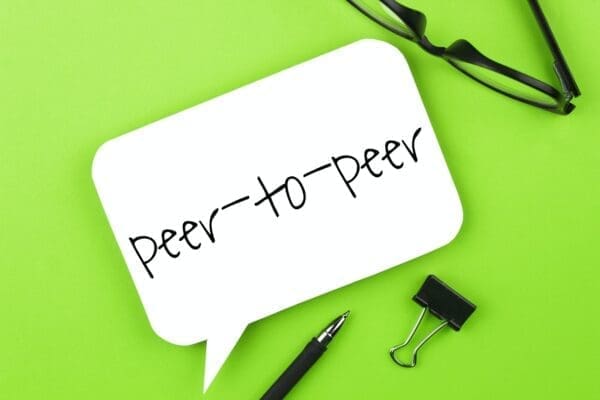Didn’t You See the Email?
Business communication channels tend to get taken for granted. We use them day in, day out. But how much do we think about how we’re using them, and why? Everyone communicates, passing information, getting feedback and getting the job done. But could we do it more productively to open conversations and build relationships?
In this article, we look at the different communication channels and their impact on how the audience receives our message. And we also look at how and why the communication process can go wrong. One thing’s for sure – we can all do better!
Understanding the Communication Channels Can Change the Way Your Business Works
There are four ‘core’ communication channels in business:
- Verbal
- Non-verbal
- Written
- Visual
Reasons to Stay Focused, Parts 1, 2, 3
The consistent challenge for businesses is to communicate quickly across distance. The recent quantum leap in tech, with computers, smartphones, email and the Internet, transformed how we work. But the fundamentals remain. That’s true, whether you communicate verbally, in writing or visually. Remember the ‘holy trinity’ of effective communication:
- Attention: Who do you want to communicate with? How do you want them to perceive you?
- Content: Focus on what you want to achieve. There are two aspects: the message you want to get across, and the response you seek. Don’t waffle! Stay ‘lean,’ clear, polite, unaggressive and friendly and you’ll encourage people to respond likewise.
- Purpose: Remember why you’re communicating. Depending on context, aim to make connections, open conversations and build relationships. Even if you’re turning down business pitches or talking about price rises.
I’m Glad You’re Here, We Need to Talk
Core Channel #1: Verbal

We speak and listen, and exchange information and feedback. Verbal communication is instant, in real time. People receive information, process it and respond. At different speeds, maybe, but they respond. However, if things get in the way and cause interference, it can go wrong. It’s as important to review and evaluate conversations, as other aspects of your work.
Interference factors in verbal communication include:
- Inattention: Are we paying total attention, and fully listening?
- Distraction: If people don’t listen, or react unpredictably, maybe they’re distracted. They may have other priorities. Or lack confidence. They may have personal problems on their mind. They may have a narrow window of tolerance, easily triggered due to past trauma and anxiety. Or they may be neurodiverse, wired differently. All this impacts verbal communication.
- Tone: Starting from ‘hello’, we ‘read’ people’s inflexions and accents, and our communication filters and biases kick in. We respond instinctively to warmth or threat. And we monitor if the other person’s listening. Emphasising particular words changes the whole meaning. And softening your tone alters your emphasis and perceived intention, and helps diffuse misunderstandings.
- Choice of words: If you use unfamiliar words, check the other person understands and gives the answer you want. Or they may garble your message when passing it on.
- Formality: Business is more informal these days. And we speak more casually with friends or close colleagues, compared with the boss. Keeping communication in hierarchies as informal as possible makes it feel like we’re communicating with people of similar status. We’re all in this together! And everyone’s engagement improves.
First Impressions are Lasting Impressions
This can matter more than what we say. Firstly, we send silent messages, before we speak. Secondly, people go on first impressions. Experts say over half our in-person communication is non-verbal. So bear in mind these non-verbal communication sub-channels:
Core Channel #2: Non-Verbal
- Personal presentation: We assess people by their dress and overall appearance. But some people ‘present’ differently to the norm. Also, dressing for interviews, meetings or work can heighten people’s anxiety and affect their choices.
- Eye contact: When you talk, you expect people to look at you. You can tell if they’re listening and understanding. ‘Flitting’ eyes can mean people come over as shifty. But they might be introverts with much to offer. Staring at people who are ‘different’, or looking away from them, is a micro-aggression. In some cultures, eye contact means insubordination. So, people from there may not hold your gaze comfortably. Also, in other cultures, not maintaining your gaze says you’re not paying attention. People feel insulted.
- Facial expressions: We sense immediately if the other person wants to continue talking. And we notice ‘micro-expressions’, betraying uncomfortable emotions and, maybe, lying.
- Posture: How you sit or stand matters. People notice whether you’re relaxed, confident, interested, aloof, or professional.
- Behaviour: You wouldn’t suddenly get up in the middle of a meeting and leave. That would be weird. But people judge each other on how they move around and sit, and fiddle with things. so looking at your phone in meetings isn’t a good move!
- Handshake: A firm handshake says you’re confident to some people, but is considered aggressive and untrustworthy in some cultures. Handshakes vary depending on gender, ethnicity and sexual orientation. Or whatever. Don’t judge.
- Smells can also be provocative and inappropriate. Strong aftershaves and fragrances aren’t a good move in offices! Nor is turning up smelling of alcohol. Unless the client’s with you and it’s going well…
Core Channel #3: Written Communication

Our ‘holy trinity’ of attention, content and purpose, applies here too.
Written communications include:
- Memos
- Texts
- Proposals
- Emails
- Letters
- Training manuals
- Operating policies
- Social media posts
Do You Really Know Why Speaking and Writing Work Differently?
Verbal communication happens in real time. Though there are exceptions, like voicemails. By contrast, written communication happens over a longer period, even if only a few moments later, like a text. Written communications can be handwritten or printed. Or transmitted and read onscreen and kept. Your spoken words may be remembered. But what you’ve written is out there. And it might not be deleted…
The 7 C’s of Written Communication – It’s About Being Human
- Clear: Be specific, avoiding using long words and ambiguous terms.
- Concise: Communicate in as few words as possible. Choose the best words to make your point without being aggressive.
- Correct: State facts. Be truthful and accurate. Support your story with statistics.
- Complete: Convey all the facts the audience require and consider their mindset.
- Concrete: Be specific, definite and vivid, not vague and general.
Remember, you’re dealing with human beings here. So, you also need to be
- Considerate: Step into the recipient’s shoes. Understand their viewpoints, mindset, needs and emotions.
- Courteous: Show respect and be polite, sincere, enthusiastic and reflective.
Tell Me, Where Does ‘Rich’ Content Come into Written Communication?

We talked about keeping verbal and written communication ‘lean,’ and concise. Sometimes telling your story needs more detail.
This might mean publishing a report, a case study, a spreadsheet with links to other websites, or a discussion paper. That’s when your content can be ‘rich.’
Here the focus is on completeness. Aim to leave all parties satisfied and feeling accomplished. Anticipate questions, and be willing to answer. And don’t be defensive! Work on empathy, resolving conflicts and building relationships.
Think Digital
What we’ve said about verbal and written communication channels translates into digital channels too:
- Face to face verbal communication becomes video conferencing.
- Speaking in person becomes using phones and messaging.
- Draft memos and proposals become shared documents.
Non-verbal communication is important in video conferencing. We can’t look people in the eye, but we can see if they’re paying attention. On Zoom calls and the like, you can see people’s posture, their smile or otherwise, and their emotions. And their personal presence comes across.
On the phone we hear people’s tone of voice. Sales people talk about smiling in phone calls when they ask for something. Standing up gives them more energy. Go on, try it!
Core Channel #4: Visual Communication
This includes:
- Presentations
- Training and educational videos
- Trade shows
- Conferences
- Websites
- Social media posts
The time it takes to get a response and judge the effectiveness varies for each of these sub-channels. But in each one there’s either verbal or written communication. And the 7 ‘C’s apply here, too. So be clear: correct: complete: concrete and concise: and when you’re face to face with the audience, courteous and considerate.
That’s the Way to Do it – Communication Channels By Numbers

Observers have identified a host of different approaches to communication channels. You need to bear these in mind:
3 Levels of Formality
- Formal channels: These are official ways of communicating. Messages follow a chain of command. Information flows from leaders to managers and on to their subordinates, from retailers to suppliers and so on.
- Informal channels: These are also official, but more relaxed. This includes chats on the work floor and lunchtime conversations. Also, emails not needing formal command.
- Unofficial channels: Employees communicate outside work, on topics unrelated to work. But leaders and managers need to be aware of such channels and the information flowing through them. And employees need to remember they’re being observed!
5 Communication Channels in Speech
This list combines verbal and non-verbal communication:
- Facial expression
- Body language
- Voice
- Verbal content
- Verbal style
The key point here is that tuning into only one channel when talking to someone can put you at risk. First, you may only get part of, not all the message! Second, you could misunderstand the person, or be deceived.
9 Types of Organisational Communication
- Business communication: Use of corporate advertising, PR, social and other media to reach corporate audiences, stakeholders and the community
- Managerial: Activity to achieve organisational objectives: official communications with employees, customers and suppliers
- Organisational communication: Internal communication
- Human relations and team building: Communication to achieve objectives and harmonise interpersonal relations. This includes customers and external partners.
- Report writing: Product literature, standard operating procedures, policy manuals, customer operation brochures.
- E commerce: websites and apps
- International communication: Websites and operating manuals need to be in different languages
Communication Channels Between Equals and Peers

If you only counted 7 types in this list, and not 9, you’re right! Organisational communication tends to be vertical, between people or organisations of differing status. Their respective hierarchical positions are quite clear. Not so much, the remaining two types of organisational communication, sales and marketing and project management. Let’s look at those now.
Communication Channels in Sales and Marketing
- Face to face communication: Nothing comes close to speaking to your customer in person, whether one-to-one meetings, customer events or trade shows. If you can’t be face to face, there’s always the phone and email. But before you send yet another sales email or pick up the phone, stop! Don’t just go after a quick sale to hit your target. Try to make connections and open conversations. And build relationships.
- Video conferencing: Make meetings and reviews sustainable. Make quicker decisions and shorten timelines.
- Website: Developing areas here include live chat, video chat and chatbots. 38% of customers are likely to buy more if you offer live chat. Chatbots currently handle nearly 1 in 6 customer interactions globally.
- Messaging: 9 out of 10 people with smartphones use messaging apps. And 6 out of 10 believe brands should use messaging more.
- Social media: 57% of consumers follow brands on social media. They do it to know about new products or update on company information.
- Email: Companies use email to offer customers a personalised experience. And trade media use it to help brands and customers connect.
- Community: Facebook, LinkedIn and other platforms help build user bases and engage customers. And social groups and forums provide brand insights.
- Traditional channels: TV, radio, newspapers, magazines and outdoor still deliver the impact brands need.
Communication Channels in Project Management
As promised, here’s a checklist of channels specifically relevant to projects. The key point is, the people involved are more or less equal:
- Face to face conversations
- Video conferencing
- Phone calls and audio conferencing
- Emails
- Written letters and memos
- Chats and messaging
- Blogs
- Formal written documents
- Spreadsheets
The more collaborators you need to reach in your project, the faster the number of communication channels grows. Hence you need to understand which channels will give the impact and richness you want.
And Finally: Six Tips to Keep it ‘Lean’… Read All About it… You’re Not Going to Like This

Choosing the communication channels for your message requires an understanding of your audience and how you want them to see you. Bear in mind attention, content and purpose, the 7 ‘C’s and keeping it lean.
Try These Six Tips to Keep it ‘Lean’:
- Whether talking or writing, start by asking yourself these questions. First, what’s the aim and purpose of your message or question? Second, is this the best way to deliver it?
- Short messages or texts are best for simple and immediate requests and comments.
- More than a few sentences? Send an email. Or pick up the phone.
- Save discussions involving more than three or four points for meetings. Or conference calls.
- Are you in the same office? Speak face to face.
- Follow phone calls with emails.
Read All About it
Alan H. Palmer’s book ‘Talk Lean‘ has some great tips about getting to the point without alienating people. And Tasha Eurich’s book ‘Insight: How to succeed by seeing yourself clearly’ is good for developing the self-awareness you need to think this through.
Sorry, You’re Not Going to Like This…
Sometimes you have to pass on bad news. And your audience won’t be happy! But there are ways to do it. Businesses have been writing to customers recently about price rises. Octopus Energy stood out. They had the grace to explain their position compassionately. Whatever your message, you can use communication channels to build relationships. But it takes work.
Action: For even more useful content on communication, check out our ultimate guide on communication skills.




